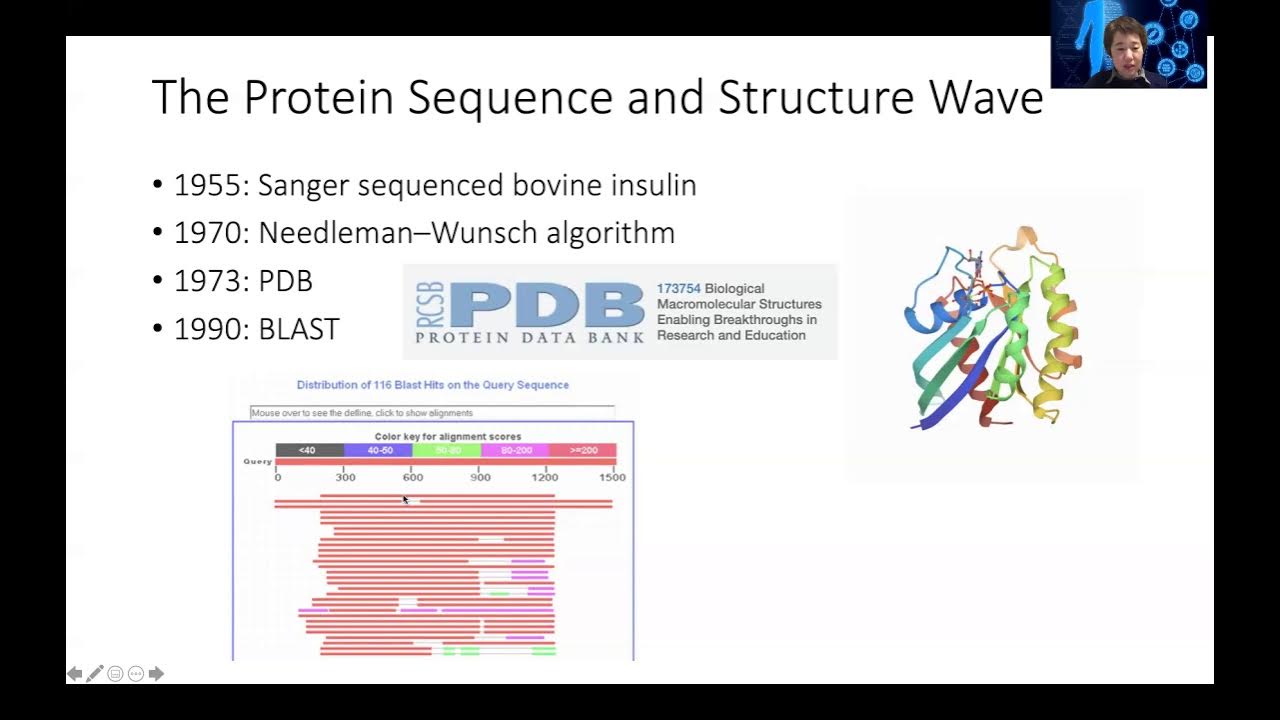01 - Introduction to Metagenomics
Summary
TLDRThis course introduces bioinformatics analysis of metagenomic sequencing data, exploring the evolution of microbiology from early microscopy to advanced genomic technologies. It covers the significance of microbial communities, metagenomic tools, and the role of the human microbiome in health and disease. Key techniques like 16S ribosomal RNA sequencing are discussed, highlighting their importance in identifying unculturable microorganisms. Students will gain practical experience using bioinformatics platforms, enabling them to analyze and interpret metagenomic data independently, with applications spanning various health conditions and ecological studies.
Takeaways
- 😀 The course introduces bioinformatics analysis of metagenomic sequencing data, emphasizing genomic sequencing technologies for studying microbes.
- 😀 Microscopy has historically unveiled the existence of microorganisms, starting with Anton van Leeuwenhoek's discovery in 1673.
- 😀 Advances in bacterial culturing and staining techniques have significantly improved the identification and treatment of bacterial diseases.
- 😀 The discovery of culture media in the 19th century allowed for reproducible bacterial culturing, pioneered by Louis Pasteur.
- 😀 Gram staining differentiates bacterial species into gram-positive and gram-negative categories, facilitating faster diagnostics than culturing.
- 😀 Most microorganisms exist in complex communities, and metagenomics enables the study of these unculturable microorganisms in their natural environments.
- 😀 The human microbiome, comprised of trillions of microbial cells, plays critical roles in health, metabolism, and immune system function.
- 😀 Significant investments have been made in human microbiome research, leading to projects like the Human Microbiome Project that advance our understanding of microbial communities.
- 😀 Metagenomics allows for the genomic analysis of microbial DNA from environmental samples, providing insights into entire communities rather than individual organisms.
- 😀 The integration of multi-omics data sets, including sequencing and mass spectrometry, is the future of microbiome research, enhancing our understanding of microbial roles in health and disease.
Q & A
What is the main focus of the Armex Logic Metagenomics course?
-The course introduces participants to bioinformatics analysis of metagenomic sequencing data, starting with genomic sequencing technologies.
How did the invention of the microscope impact microbiology?
-The invention of the microscope allowed scientists to observe microorganisms for the first time, revealing a previously unseen world that is vital to various biological processes.
What are Gram stains, and why are they important?
-Gram stains are a laboratory technique used to differentiate bacterial species into Gram-positive and Gram-negative categories, helping in the diagnosis and treatment of infections.
What role do microbial communities play in human health?
-Microbial communities, or microbiota, form organized structures that interact with each other and the host, influencing health, disease, and ecological stability.
What advancements have been made in sequencing technologies?
-Advancements include the ability to perform metagenomic sequencing, which allows researchers to analyze uncultivable microorganisms in their natural environments.
What is the significance of 16S rRNA sequencing in microbiome studies?
-16S rRNA sequencing is a technique used to identify bacterial species by targeting specific regions of the 16S gene, providing insights into microbial community composition.
What tools and platforms will the course utilize for data analysis?
-The course will use the TBI Info platform for bioinformatics processing and analysis, offering demo pipelines and cloud infrastructure for handling large datasets.
What areas of research can benefit from metagenomic studies?
-Metagenomic research can be applied to various fields, including skin conditions, gut health, antibiotic resistance, cancer research, and ecological studies.
How does the integration of multi-omics data enhance microbiome research?
-Integrating multi-omics data, such as metagenomics, proteomics, and metabolomics, provides a comprehensive understanding of microbial roles and interactions within communities.
What outcomes can participants expect from completing the program?
-Participants will gain the ability to find, analyze, and interpret metagenomic data independently, with access to resources and support for further learning.
Outlines

Этот раздел доступен только подписчикам платных тарифов. Пожалуйста, перейдите на платный тариф для доступа.
Перейти на платный тарифMindmap

Этот раздел доступен только подписчикам платных тарифов. Пожалуйста, перейдите на платный тариф для доступа.
Перейти на платный тарифKeywords

Этот раздел доступен только подписчикам платных тарифов. Пожалуйста, перейдите на платный тариф для доступа.
Перейти на платный тарифHighlights

Этот раздел доступен только подписчикам платных тарифов. Пожалуйста, перейдите на платный тариф для доступа.
Перейти на платный тарифTranscripts

Этот раздел доступен только подписчикам платных тарифов. Пожалуйста, перейдите на платный тариф для доступа.
Перейти на платный тариф5.0 / 5 (0 votes)






